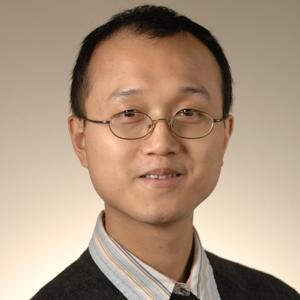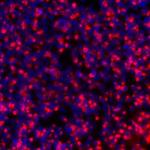
Research Topics
Our research aims to understand how gene expression is regulated in cancer cells and stem cells. In previous studies, we explored the role of p53 in stress responses of embryonic stem cells, uncovering insights into how these cells maintain their genetic stability. Currently, we are investigating transcription factors that drive osteosarcoma and breast cancer, identifying key players like RUNX2, RUNX1, CBFB, and SOX9. Our goal is to use this knowledge to develop new treatments for these cancers in the future.
Project 1: Transcriptional and epigenetic vulnerabilities in osteosarcoma.
Osteosarcoma (OS) stands as the second leading cause of cancer-related death in children and young adults, with its standard care remaining unchanged for the past four decades. The development of new therapies for OS poses significant challenges. Presently, there is a lack of FDA-approved targeted therapies for OS, and immunotherapies, including anti-PD-L1, have proven ineffective in clinical trials. Genomic and epigenomic studies have uncovered the prevalence of RUNX2 and/or MYC amplification in addition to TP53 deletion or mutation in many osteosarcoma (OS) tumors. As these genes encode transcription factors, we posit that transcriptional dysregulation serves as a key factor in driving osteosarcoma progression. Our objective is to elucidate a comprehensive depiction of the core regulatory network in OS.
Our previous research generated insights into the functional interactions between these transcription factors, described as follows.
1) p53 represses RUNX2 via microRNA 34s, a regulation critical for the osteoblast differentiation of mesenchymal stem cells (MSCs). (He et al., Stem Cells, 2015).
2) The CBFB-RUNX2 complex is essential for osteosarcoma cell survival as it recruits the Menin/MLL complex to epigenetically induce MYC expression. (Shin et al., PLOS Genetics, 2016).
3) Several transcription factors determine the lineage choice of OS development from MSCs. For example, SOX9 mediates the development of chondroblastic OS. (He et al, Stem Cell Reports, 2017).
4) SOX9 is a key component of the RUNX2 transcriptional circuitry in OS, acting both a downstream target of RUNX2 and a partner to induce MYC expression. (Kim et al, Cell & Bioscience, 2023).
This early stage of investigation has yielded several molecular targets for OS. For example, we are collaborating with Dr. John Bushweller’s group at UVA to test the effect of CBFB inhibitors in killing osteosarcoma cells.
Our ongoing research builds upon recent discoveries indicating that RUNX2, together with its chromatin-binding partners, regulates immune-related genes. This observation potentially explains why current immunotherapy agents in the clinic lack efficacy in OS. Consequently, we are actively researching the underlying mechanisms of this RUNX2-regulated immunoepigenetics, aiming to develop strategies for enhancing immunotherapy effectiveness in OS.
Project 2: Gene expression dysregulation in breast cancer.
The TP53, CBFB, and RUNX1 genes are frequently mutated in breast cancer, and they encode transcription factors, highlighting the importance of transcriptional/epigenetic dysregulation in breast cancer progression.
Our recent study revealed a functional interaction between p53 and CBFB in breast cancer suppression (Navdeep et al., PLOS Genetics, 2021). One major unexpected theme from our studies is that CBFB plays crucial roles in regulating cytosolic protein translation (Navdeep et al., Nature Communications, 2019) and mitochondrial translation (Navdeep et al., Cancer Research, 2023). Preliminary data suggest that CBFB mutations may serve as a biomarker to predict the efficacy of autophagy inhibitors in breast tumors (Navdeep et al., Autophagy, 2023). Additionally, we have proposed a combination therapeutic strategy for breast tumors bearing CBFB mutations (Navdeep et al., Cancer Research, 2023).
Our ongoing research encompasses two main objectives: 1) elucidating the functions of mutant p53 and its binding partners in transcriptional regulation, and 2) furthering our investigation into the role of CBFB in breast cancer progression. Our aim is to develop new strategies for genomically-guided precision oncology in breast cancer.
Project 3: p53-mediated stress responses of embryonic stem cells.
As embryonic stem cells (ESCs) have the potential to differentiate into many different cell types and are a promising source for cell therapy, maintaining genomic stability and homeostasis is crucial for normal development. Despite this importance, the mechanisms by which ESCs maintain genome stability in response to DNA damage insults were poorly understood. To address this question, we studied how the tumor suppressor protein p53 regulates the DNA damage responses of ESCs. Our research showed that p53 plays an essential role in regulating ESC differentiation after DNA damage by down-regulating the transcription of many ES cell-critical genes (Li et al., Cell Stem Cell, 2015; Zhang et al., Cell Cycle, 2013; Li et al., Molecular Cell, 2012; Lee et al., PNAS, 2010). Recently, we have studied the metabolic stress responses of ESCs and found that Tfcp2l1-mediated fatty acid oxidation plays a critical role in maintaining ESC survival during metabolic stress (Yan et al., EMBO Reports, 2021).
Our research endeavors have generated valuable insights into the mechanisms underlying human embryonic development and developmental disorders.
Methods: We employ a wide range of established and innovative methods to advance our research objectives. Our toolbox includes traditional techniques such as molecular biology methods (e.g., PCR and cloning) and biochemistry techniques (e.g., Western blotting and proteomics). Additionally, we utilize cutting-edge methods such as CRISPR gene editing, advanced genomics techniques (such as ChIP-seq, RNA-seq, and single-cell genomics), mouse genetics, and systems biology approaches. We continuously evaluate and refine our methods, ensuring we have access to the latest technological advancements to tackle complex biological questions. By using these techniques, we aim to gain a deeper understanding of the molecular mechanisms underlying stem cell differentiation and cancer development, ultimately leading to the development of new therapeutic approaches.
Training: Training is a cornerstone of our program, and we offer our trainees a flexible combination of opportunities to develop their skills and knowledge. We provide regular seminars, journal club discussions, and opportunities to publish research findings in high-impact journals. Our goal is to provide a comprehensive training experience that prepares our trainees for successful careers in academia, industry, or government. Many of our past trainees have become independent investigators with their laboratories, and others have gone on to work as scientists in biotech and pharmaceutical companies. We are committed to supporting the success of our trainees and ensuring that they have the skills and knowledge they need to excel in their chosen careers.
Collaborators (former and current): Intramural: Drs. Glenn Merlino, Kent Hunter, Stuart Yuspa, Lalage Wakefield, Beverly Mock, Ji Luo, Mark Simpson, Rosie Kaplan, Daniel Larson, Pamela Robey, Chengyu Liu. Extramural: Drs. Shelley Berger, John Bushweller, Richard Gorlick
Biography
Dr. Huang holds a B.S. in Biochemistry from Peking University and a Ph.D. in 2004 from the University of Rochester, New York, where he studied estrogen receptor signaling in breast cancer under the guidance of Drs. Robert Bambara and Mesut Muyan. Following this, he completed his postdoctoral training in cancer epigenetics with Dr. Shelley Berger at the Wistar Institute. In 2008, he became a tenure-track Principal Investigator at the Laboratory of Cancer Biology and Genetics, where he received tenure in 2016. Dr. Huang is a recipient of several awards, including the NCI Director's Innovation Award (co-recipient), the NIH Stem Cell Center grant, and the Federal Technology Transfer Award.
Selected Publications
- He Y, Zhu W, Shin MH, Gary J, Liu C, Dubois W, Hoover SB, Jiang S, Marrogi E, Mock B, Simpson RM, Huang J. cFOS-SOX9 Axis Reprograms Bone Marrow-Derived Mesenchymal Stem Cells into Chondroblastic Osteosarcoma. Stem Cell Reports. 2017;8(6):1630-1644.
- Shin MH, He Y, Marrogi E, Piperdi S, Ren L, Khanna C, Gorlick R, Liu C, Huang J. A RUNX2-Mediated Epigenetic Regulation of the Survival of p53 Defective Cancer Cells. PLoS Genet. 2016;12(2):e1005884.
- He Y, de Castro LF, Shin MH, Dubois W, Yang HH, Jiang S, Mishra PJ, Ren L, Gou H, Lal A, Khanna C, Merlino G, Lee M, Robey PG, Huang J. p53 loss increases the osteogenic differentiation of bone marrow stromal cells. Stem Cells. 2015;33(4):1304-19.
- Li M, Gou H, Tripathi BK, Huang J, Jiang S, Dubois W, Waybright T, Lei M, Shi J, Zhou M, Huang J. An Apela RNA-Containing Negative Feedback Loop Regulates p53-Mediated Apoptosis in Embryonic Stem Cells. Cell Stem Cell. 2015;16(6):669-83.
- Li M, He Y, Dubois W, Wu X, Shi J, Huang J. Distinct regulatory mechanisms and functions for p53-activated and p53-repressed DNA damage response genes in embryonic stem cells. Mol Cell. 2012;46(1):30-42.
Related Scientific Focus Areas




Molecular Biology and Biochemistry
View additional Principal Investigators in Molecular Biology and Biochemistry

This page was last updated on Tuesday, April 9, 2024